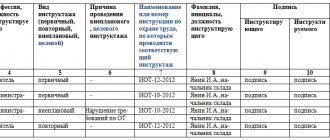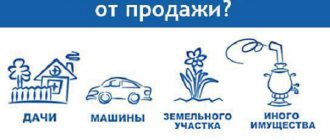Who pays excise taxes
Legal entities, individual entrepreneurs (IP), importers and exporters who carry out transactions subject to excise taxes.
In practice, producers, processors and importers of excisable products act as excise tax payers. Resellers do not pay excise taxes. Please note: organizations and individual entrepreneurs carrying out transactions subject to excise taxes do not have the right to switch to a simplified taxation system and pay a single agricultural tax.
Fill out a payment form for free in the service, where the current KBK and other details are entered automatically
Clause 7, Article 193 of the Tax Code of the Russian Federation
The excise tax rate on benzene, paraxylene, orthoxylene (ABPO) is determined by the taxpayer in rubles per 1 ton using the formula:
| ABPO = 2800 + 744 x Kcorr, |
where Kcorr is the coefficient determined in the manner established by paragraph 6 of this article.
The calculated excise tax rate on benzene, paraxylene, orthoxylene (APBO) is rounded to a whole value in accordance with the current rounding procedure and is recognized for the purposes of this chapter as a fixed (specific) rate.
(Clause introduced - Federal Law dated 03.08.2018 No. 301-FZ)
What goods are excisable?
Ethyl alcohol and products that contain more than 9% of such alcohol. The exception is medicines, as well as veterinary drugs in containers of no more than 100 ml. Another exception is perfumes and cosmetics with a share of ethyl alcohol up to 80% inclusive (with a spray bottle - up to 90% inclusive), bottled in bottles up to 100 ml, as well as perfumes and cosmetics with a share of ethyl alcohol up to 90% inclusive, bottled in containers up to 3 ml. inclusive.
In addition, alcohol products, beer, tobacco products (including those intended for consumption by heating), cars and motorcycles with an engine power exceeding 112.5 kW (150 hp), diesel fuel, motor oils, automobile and straight-run gasoline, benzene, paraxylene, orthoxyl, aviation kerosene, natural gas, as well as electronic nicotine delivery systems and liquids for them.
When are excise taxes charged?
When importing excisable goods, as well as when selling and transferring excisable goods produced on the territory of the Russian Federation.
The sale of excisable goods is a transfer of ownership on a paid or gratuitous basis, including the use of excisable products for payment in kind. In this case, excise taxes are charged only in the case when ownership passes directly from the manufacturer of excisable goods (for example, from the manufacturer to the wholesaler). For further resale (for example, when shipped from a wholesaler to a retail chain), excise taxes are not required.
Also, excise taxes must be paid on the sale of confiscated and ownerless excisable goods, including excisable goods received by court decision.
The transfer of excisable goods is an operation in which there is no transfer of ownership. In this case, excise taxes are charged only if excisable goods are transferred directly by their manufacturer. If the product is transferred by the person who bought it in finished form, there is no need to charge excise taxes.
Thus, excise taxes are imposed on the transfer of manufactured products for processing on a toll basis and the shipment of excisable goods made from toll raw materials. In addition, excise taxes are charged upon the transfer of manufactured goods for one’s own needs, to the authorized capital or to the founder upon the latter’s disposal.
In general, excise taxes cover the movement of products within a company for the further production of non-excisable goods, and plus the internal transfer of ethyl and cognac alcohol for the production of alcohol or other excisable products. The internal movement of created excisable goods to the unit involved in their retail sale is also subject to excise duties.
Finally, excise taxes are charged when denatured ethyl alcohol and straight-run gasoline are obtained by organizations that have the appropriate certificates.
Clause 8 of Article 193 of the Tax Code of the Russian Federation
Unless otherwise established in this paragraph, the excise tax rate on petroleum raw materials (ANS) is determined by the taxpayer in rubles per 1 ton using the formula:
| ANS = ((Tseft x 7.3 - 182.5) x 0.3 + 29.2) x P x SPY x Kcorr x Kreg, |
where Cneft is the average price level of Urals oil on world markets for the calendar month of the tax period, expressed in US dollars per barrel, determined in accordance with paragraph 3 of Article 342 of this Code; (As amended by Federal Law No. 255-FZ dated July 30, 2019)
P - the average value for a calendar month of the US dollar to Russian ruble exchange rate, established by the Central Bank of the Russian Federation, determined by the taxpayer independently as the arithmetic average of the US dollar to Russian ruble exchange rate, established by the Central Bank of the Russian Federation, for all days in the calendar month;
SPYU is a specific coefficient characterizing the basket of petroleum processing products. Calculated in the manner determined by this paragraph, the SPYU coefficient is rounded to the fourth decimal place in accordance with the current rounding procedure; (As amended by Federal Law No. 255-FZ dated July 30, 2019)
Kcorr - coefficient determined in the manner established by paragraph 6 of this article;
Kreg is a coefficient characterizing the regional characteristics of the markets for petroleum products.
Kreg is determined in relation to petroleum raw materials sent for processing at production facilities for processing petroleum raw materials, specified in the certificate of registration of a person carrying out operations on processing petroleum raw materials, issued to the taxpayer or an organization directly providing the taxpayer with services for processing petroleum raw materials, and is taken equal to:
1.5 - in relation to production facilities located in the Republic of Khakassia and the Krasnoyarsk Territory;
1.4 - in relation to production facilities located in the Republic of Tyva and the Irkutsk region;
1.3 - in relation to production facilities located in the Yamalo-Nenets Autonomous Okrug, the Komi Republic, the Nenets Autonomous Okrug, the Republic of Sakha (Yakutia), the Republic of Buryatia;
1.1 - in relation to production facilities located in the Tyumen, Kemerovo, Novosibirsk and Tomsk regions, Trans-Baikal Territory, Khanty-Mansiysk Autonomous Okrug - Ugra;
1.05 - in relation to production facilities located in the Omsk region, Altai Territory, and the Altai Republic;
1 - in relation to production facilities located in other constituent entities of the Russian Federation.
SPYU is determined by the formula:
| (VNS - 0.55 x VPB - 0.3 x VSV - 0.065 x VKS - VT) S PY = ———————————————, V NS |
where VNS is the amount of petroleum raw materials owned by the taxpayer and sent by the taxpayer or an organization directly providing the taxpayer with services for processing petroleum raw materials, for processing according to the data of measuring instruments located in the places specified in the registration certificate of the person performing petroleum processing operations raw materials issued to the taxpayer or an organization directly providing the taxpayer with services for processing petroleum raw materials, for the tax period, expressed in tons;
VPB - the amount of straight-run gasoline produced from petroleum raw materials, sent for processing and owned by the taxpayer by right of ownership, which is sold by the taxpayer in the tax period (in the case of processing of petroleum raw materials on the basis of an agreement to provide the taxpayer with services for the processing of petroleum raw materials - transferred to the taxpayer and (or ) on his behalf to third parties in the tax period) and (or) transferred in the tax period within the structure of a taxpayer who has a certificate for processing straight-run gasoline, for processing into petrochemical products, straight-run gasoline, benzene, paraxylene, orthoxylene, expressed in tons;
VСВ - the amount of commercial gasoline, light and middle distillates in liquid form (at a temperature of 20 degrees Celsius and a pressure of 760 millimeters of mercury), benzene, toluene, xylene, lubricating oils produced from petroleum raw materials, sent for processing and owned by the taxpayer by right of ownership , which are sold by the taxpayer in the tax period (in the case of processing petroleum raw materials on the basis of an agreement to provide the taxpayer with services for processing petroleum raw materials - transferred to the taxpayer and (or) on his behalf to third parties in the tax period), expressed in tons;
VKS - the amount of petroleum coke produced from petroleum raw materials, intended for processing and owned by the taxpayer by right of ownership, which is sold by the taxpayer in the tax period (in the case of processing petroleum raw materials on the basis of an agreement to provide the taxpayer with services for processing petroleum raw materials - transferred to the taxpayer and (or ) on his behalf to third parties during the tax period),
expressed in tons;
VT - the amount of fuel oil, petroleum bitumen, paraffin, petroleum jelly, waste petroleum products, other liquid (with the exception of fractions, the mass fraction of methyl tert-butyl ether and (or) other ethers and (or) alcohols in which is at least 85 percent) or solid products of processing of petroleum raw materials, produced from petroleum raw materials, intended for processing and owned by the taxpayer by right of ownership, which are sold by the taxpayer in the tax period (in the case of processing of petroleum raw materials on the basis of an agreement to provide the taxpayer with services for the processing of petroleum raw materials - transferred to the taxpayer and (or) on his behalf to third parties in the tax period), expressed in tons. The physical state of petroleum processing products in this paragraph is determined at a temperature of 20 degrees Celsius and a pressure of 760 millimeters of mercury. (As amended by Federal Law No. 255-FZ dated July 30, 2019)
The volumes of refined petroleum products specified in paragraphs eighteen to twenty-one of this paragraph are taken into account when determining the SPY indicator, taking into account standard losses that arise after shipment of refined petroleum products and before the transfer of ownership of these products and associated with the technological features of the transportation process. (Paragraph introduced - Federal Law dated July 30, 2019 No. 255-FZ)
In case of return of products of processing of petroleum raw materials, shipped by the taxpayer (in the case of processing of petroleum raw materials on the basis of an agreement to provide the taxpayer with services for the processing of petroleum raw materials - transferred to the taxpayer or on his behalf to third parties) in previous tax periods, the values of the indicators VPB, VCB, VKS, VT for the corresponding tax periods are not recalculated, and the volumes of returned petroleum products are excluded from the corresponding volumes of VPB, VSV, VKS, VT in the tax period in which the return of these products was made. (Paragraph introduced - Federal Law dated July 30, 2019 No. 255-FZ)
If the value of Cneft calculated for the tax period turned out to be less than or equal to 25 dollars per barrel, the excise tax rate on crude oil (ANC) for such a tax period is taken equal to the product of 20 US dollars, the average value for the calendar month of the tax period of the US dollar to Russian ruble exchange rate Federation (P) and coefficient Kcorr.
Regardless of the fulfillment of other conditions established by this paragraph, the excise tax rate on crude oil (ANC) for a tax period is taken equal to 0 if at least one of the following conditions is met in such a tax period:
for the tax period, the ratio of the sum of the values of VPB, VSV, VKS, VT to the value of VNS turned out to be less than 0.75;
the volume of motor gasoline of class 5 and (or) diesel fuel of class 5, produced, including under an agreement on the provision of services to the taxpayer for the processing of petroleum raw materials, and sold by a taxpayer who has a certificate of registration of a person performing operations for the processing of petroleum raw materials, and (or ) another person included in the same group of persons with such a taxpayer in accordance with the antimonopoly legislation of the Russian Federation, in the tax period at exchange trading conducted by the exchange (exchanges), turned out to be less than the minimum amount of sales at exchange trading of class 5 motor gasoline and (or) diesel class 5 fuel, respectively, determined by the taxpayer independently in the manner established by the Government of the Russian Federation. For the purposes of this paragraph, sales are recognized as the conclusion of a purchase and sale agreement at exchange auctions conducted by an exchange (exchanges) in accordance with the Federal Law of November 21, 2011 No. 325-FZ “On Organized Auctions”. In this case, the fact of concluding the said agreement is confirmed by the relevant exchange(s) with summary extracts from the register of purchase and sale agreements concluded by the taxpayer (on behalf of the taxpayer) or another person specified in this paragraph. The requirements established by this paragraph do not apply to taxpayers who do not produce Class 5 motor gasoline and Class 5 diesel fuel during the tax period, including on the basis of an agreement to provide the taxpayer with services for processing petroleum raw materials. Also, the requirements of this paragraph do not apply when determining the excise tax rate in respect of petroleum raw materials sent for processing to production facilities located in the Khabarovsk Territory, indicated in the certificate of registration of a person carrying out operations for processing petroleum raw materials, issued to the taxpayer or to an organization directly providing the taxpayer with services for processing of petroleum raw materials. (As amended by Federal Law No. 255-FZ dated July 30, 2019)
The calculated excise tax rate on crude oil (ANS) is rounded to a whole value in accordance with the current rounding procedure and is recognized for the purposes of this chapter as a fixed (specific) rate.
For the purposes of this paragraph, the definition of the types of petroleum raw material processing products produced and sold by the taxpayer (in the case of processing of petroleum raw materials on the basis of an agreement for the provision of services to the taxpayer for the processing of petroleum raw materials - transferred to the taxpayer and (or) on his behalf to third parties) (VPB, VSV, VKS , VT) is carried out by him independently in the manner established by the Government of the Russian Federation on the basis of the unified Commodity Nomenclature for Foreign Economic Activity of the Eurasian Economic Union.
An organization that provides petroleum raw material processing services to a taxpayer who has a registration certificate for a person carrying out operations on processing petroleum raw materials is obliged to transfer to the specified taxpayer the documents and information necessary to determine the excise tax rate on petroleum raw materials (ANS) within 15 calendar days, counting from the first day of the month following the month of the tax period.
For the purposes of this chapter, if the products of processing of petroleum raw materials specified in this paragraph are produced from petroleum raw materials intended for processing, owned by the taxpayer by right of ownership, and other raw materials (including multifunctional additives, components that are not petroleum raw materials), The procedure for determining the quantity of petroleum products produced from petroleum raw materials and sold by the taxpayer in the tax period (in the case of processing petroleum raw materials on the basis of an agreement to provide the taxpayer with services for the processing of petroleum raw materials - transferred to the taxpayer and (or) on his behalf to third parties) is established by the taxpayer independently in accounting policy for tax purposes, while the established procedure is not subject to change for three calendar years immediately following the calendar year of approval of the specified procedure. (As amended by Federal Law No. 255-FZ dated July 30, 2019)
If an organization that directly carries out the processing of petroleum raw materials and has a certificate of registration of a person carrying out operations on the processing of petroleum raw materials, during the tax period carries out the processing of its own petroleum raw materials and (or) the petroleum raw materials of third parties, such an organization is obliged to keep separate records of oil raw materials sent for processing and all products of their processing in relation to each owner of the raw materials.
If an organization that has a certificate of registration of a person carrying out operations on the processing of petroleum raw materials carries out the processing of its own petroleum raw materials on the basis of several agreements on the processing of petroleum raw materials, such an organization determines the excise tax rate on petroleum raw materials (ANS) for each such agreement separately .
If an organization that has a certificate of registration of a person carrying out operations on processing petroleum raw materials, carries out processing of its own petroleum raw materials at the production facilities for processing petroleum raw materials specified in its certificate and (or) in the certificate of the organization directly providing such organization with services for processing of petroleum raw materials, and located in different constituent entities of the Russian Federation, such an organization determines separately the excise tax rate on crude oil (ANS) in relation to petroleum raw materials aimed at processing at production facilities located in each of the specified constituent entities of the Russian Federation.
(Clause introduced - Federal Law dated 03.08.2018 No. 301-FZ)
When excise taxes are not charged
When moving excisable goods within the manufacturing company, if the purpose of the movement is the production of other excisable goods. There is an exception here: the transfer of alcohol for the production of alcohol and other alcohol-containing excisable products is not exempt from excise taxes.
In addition, excise taxes are not charged to exporters who have provided certain documents to the tax office.
To obtain an exemption on any of the above grounds, it is necessary to keep separate records of transactions subject to and not subject to excise duties.
Benefits for certain categories of individuals and organizations for paying state duties
From 2021, the procedure for exemption from payment of state duty has been adjusted:
- individuals who have lost documents as a result of an emergency can obtain new ones free of charge . Previously, the benefit applied only to a Russian passport (clause 16, part 1, article 333.35 of the Tax Code of the Russian Federation);
- persons who apply for a work permit for a foreigner who arrives to implement a project in an innovative science and technology center are exempt from paying the fee . Previously, the benefit was valid only for participants in the Skolkovo project (clause 2.1, part 3, article 333.35 of the Tax Code of the Russian Federation). The rule also applies to issuing an invitation to enter and to extend a visa (clauses 2.2 and 2.3, part 3, article 333.35 of the Tax Code of the Russian Federation);
- provided that documents are sent to the Federal Tax Service electronically, there is no need to pay a fee for the following : registration of a legal entity;
- making changes to the constituent documents of a legal entity;
- liquidation of a legal entity;
- registration of an individual entrepreneur (clause 32, part 3, article 333.35 of the Tax Code of the Russian Federation).
Excise rates
There are three types of excise tax rates: specific, ad valorem and combined.
Specific (solid) represent a fixed amount per unit of measurement. It is the specific rates that are approved for all excisable goods except cigarettes and cigarettes. For example, for sparkling (champagne) wines in 2021, the rate is 41 rubles. for one liter.
Ad valorem rates are set as a percentage of the cost of the goods. Currently this type of bet is not used.
Combined (mixed) rates have two components: specific and advolar. Mixed rates are approved for cigarettes and cigarettes. In particular, for cigarettes in 2021, the excise tax is calculated at a rate of 2,359 rubles. for one thousand pieces plus 16% of the estimated cost* (but not less than 3,205 rubles for one thousand pieces).
Excise tax rates are revised annually. Rates have now been set for 2021, 2022 and 2023.
Results
Excise tax is an indirect tax from which the state budget is formed.
In this regard, excise taxes receive a lot of attention, and excise tax rates are revised every year to “plug holes” in the budget. Therefore, manufacturers producing excisable goods need to very carefully monitor all changes occurring in legislation. You can find more complete information on the topic in ConsultantPlus. Free trial access to the system for 2 days.
How to calculate excise taxes
It is necessary to determine the tax base and multiply it by the excise tax rate. The base is calculated separately for each type of excisable goods and depends on the rate established for it. In the case of a fixed rate, the base is the volume of production in physical terms (for example, 1,000 liters of sparkling wines). For combined rates, the base is the volume in physical terms plus the estimated value (for example, 100,000 cigarettes plus their cost equal to 690,000 rubles). If the taxpayer does not keep separate records of transactions subject to different rates, then he must determine a single base and apply the highest of the rates to it.
The base is calculated based on the results of the tax period, which is equal to one calendar month. It may happen that the base determined by producers, processors and importers of alcoholic and alcohol-containing products is less than the volume reflected by them in the Unified State Automated Information System (EGAIS). In such a situation, excise taxes must be calculated based on the data of this system.
The taxpayer presents the excise tax amount to the buyer (except for transactions with straight-run gasoline and denatured ethyl alcohol), and in the manufacture of excisable goods from customer-supplied raw materials - to the owner of such raw materials. In other words, the buyer or seller must pay not only the cost of the product and the amount of VAT, but also excise taxes. Their value is generally highlighted as a separate line in primary and settlement documents, as well as in invoices. If the excise tax payer carries out transactions exempt from this tax, the inscription “without excise tax” must be written on the “primary” and invoices. During retail sales, excise taxes are included in the price of the product, but are not highlighted on labels, price tags and receipts.
Organizations that have assessed and presented excise taxes to the buyer can include them as expenses, and entrepreneurs can include them in professional deductions.
Maintain accounting and tax records for free in the web service
Advantages and disadvantages of the excise system
The use of excise taxes in the tax system, as noted above, is of a regulatory nature in relation to those goods that the state considers a luxury or harmful to the health of citizens. In essence, excise tax is a veiled “fine” for the purchase of such goods. According to legislators, excise taxes allow:
- consistently fill the budget;
- stimulate consumption and production in a certain “correct” direction.
However, in practice, this phenomenon has two sides, and economists and sociologists do not stop debating the issue of the use of excise taxes and their constant increase.
For example, an increase in prices due to excise taxes on tobacco and alcohol leads to the fact that the population consuming these goods switches to cheaper, often counterfeit analogues, the quality of which is impossible to trace.
A positive effect, indicating a decrease in the consumption of the above goods, is possible, as world experience shows, only in the long term (more than a quarter of a century) and in a limited number of world powers (currently this has happened in Italy and Switzerland). Nevertheless, the “excise” method of fighting for the health of the nation has many supporters among legislators - rates continue to increase from year to year.
The situation is similar with excise taxes on cars and gasoline. Some experts consider the application of the specified tax to these goods to be legitimate, noting that a car is still a luxury for the population, especially in rural areas. At the same time, in their opinion, an increase in excise taxes in this area will lead to the auto market:
- to reduce the number of cars in large cities;
- to the transition to the production of electric vehicles.
Conclusion
With the help of indirect taxes - excise taxes - the state not only replenishes its budget, but also regulates the demand for certain goods: tobacco, alcohol, cars, etc. Transactions with these goods are subject to excise taxes. The legislator also provides for a number of exceptions. The tax base for each excisable product is calculated separately. Excise tax rates are fixed, percentage and combined. Rate values change regularly, usually upward.
In ch. 22 of the Tax Code of the Russian Federation discusses in detail the issues of excise taxation of transactions with excisable goods.
A positive aspect of using excise levers to regulate demand is a stable influx of funds into the budget. Increasing the price of unhealthy goods through excise taxes can reduce consumption and reduce the negative consequences of their use (cars, tobacco, alcohol). This point of view is not shared by all experts, pointing out that the consumer in this case tends to switch to cheaper analogues of the same product and the effect may be the opposite.
A constant increase in the tax burden has a negative impact on the economy as a whole.
How to take into account input excise taxes
If the buyer does not use the purchased excisable goods for the production of other excisable products, then the excise taxes transferred to the supplier or paid at customs must be included in the cost of the goods.
If the buyer sends the purchased excisable products for the production of other excisable products and includes them in expenses (professional deductions), then input excise taxes should be deducted**. The same rule applies to dealers and manufacturers. A deduction is not always possible, but only in a situation where the excise tax rate on goods sent for production and the rate on manufactured products are determined based on the same unit of measurement of the tax base.
A deduction means that when paying tax, an organization or individual entrepreneur can reduce the amount of accrued excise taxes by the amount of input excise taxes.
An important rule applies here: excise taxes can be deducted only after they have actually been paid. The right to deduction should be confirmed by primary documents for the transaction, incoming invoices (for imports - cargo customs declarations) and papers confirming the transfer of excise duty to the seller.
If at the end of the month the amount of the deduction exceeded the amount of accrued excise taxes, the difference can be offset against future payments or returned from the budget.
The procedure for calculating land tax and advance payments thereon
From 2021, the rules for calculating land duties have been adjusted in favor of taxpayers:
- a limiting coefficient has been introduced - the increase in tax calculated based on the cadastral value cannot exceed 10% per year for rights arising starting from the tax period of 2021 (clause 17 of Article 396 of the Tax Code of the Russian Federation);
- The rules for recalculating the cadastral value of a plot have been added - if the characteristics of an object change during the tax period, its new price will be taken into account from the moment the updated data is entered into the Unified State Register. If the revised tax amount turns out to be higher than previously paid, recalculation is not carried out (clause 7.1 of Article 396 of the Tax Code of the Russian Federation).
When to transfer excise taxes to the budget
For operations on the sale and transfer of excisable goods, the last date for payment of excise taxes is the 25th of the next month. For operations with straight-run gasoline and denatured alcohol - the 25th day of the third month following the expired tax period.
Russian alcohol producers must make advance payments on excise taxes no later than the 15th day of the current tax period. Subsequently, the advance payment can be deducted. Exemption from advance payments is provided for those who submit a bank guarantee to the tax office, according to which the bank undertakes to transfer excise taxes instead of the taxpayer in case of non-payment.
Find out or check OKPO, INN and other counterparty codes
Clause 9, Article 193 of the Tax Code of the Russian Federation
The excise tax rate on dark marine fuel is determined by the taxpayer in rubles per 1 ton using the formula:
| ATST = KBST + KDFO, |
where KBST is a coefficient characterizing the base excise tax rate on dark marine fuel, the value of which is taken to be 0 rubles per 1 ton for the period from January 1, 2021 to December 31, 2021 inclusive, 1,000 rubles per 1 ton - from January 1, 2022;
CDFO is a coefficient characterizing the regional characteristics of the production of dark marine fuel.
In relation to dark marine fuel sold by an organization that has a certificate of registration of a person performing operations on the processing of petroleum raw materials, owned by the specified organization and produced by such an organization or an organization with which it has concluded an agreement to provide it with services for the processing of petroleum raw materials, at production facilities for processing petroleum raw materials, specified in the registration certificate of the person directly carrying out operations for processing petroleum raw materials, and located in the Khabarovsk Territory, the value of the CDFO is taken equal to:
2100 - for the period from January 1, 2021 to December 31, 2021 inclusive;
1100 - starting January 1, 2022.
In other cases of sale and (or) receipt of dark marine fuel, the value of the CDFO coefficient is taken equal to 0.
The calculated excise tax rate on dark marine fuel (ATF) is rounded to a whole value in accordance with the current rounding procedure and is recognized for the purposes of this chapter as a fixed (specific) rate.
(Clause introduced - Federal Law dated 03.08.2018 No. 301-FZ)
How to report excise taxes
At the end of each month, taxpayers are required to submit an excise tax return to the tax office where the parent organization and each of its divisions are registered. The deadline for submitting the declaration is the 25th day of the month following the expired tax period.
For organizations that have certificates for operations with denatured alcohol and straight-run gasoline, a special procedure has been approved - they must submit declarations no later than the 25th day of the third month following the tax period.
Taxpayers obligated to make advance payments must, no later than the 18th day of the current month, submit to the tax office a copy of the payment order for the transfer of advance payments, a copy of the bank statement about debiting money from the account and a notice indicating detailed information about the transactions subject to excise duty.
Clause 6, Article 193 of the Tax Code of the Russian Federation
The excise tax rate on straight-run gasoline (APB) is determined by the taxpayer in rubles per 1 ton using the formula:
| APB = 13100 + 4865 x Kcorr, |
where Kcorr is a coefficient set equal to:
0.167 - for the period from January 1 to December 31, 2021 inclusive;
0.333 - for the period from January 1 to December 31, 2021 inclusive;
0.500 - for the period from January 1 to December 31, 2021 inclusive;
0.667 - for the period from January 1 to December 31, 2022 inclusive;
0.833 - for the period from January 1 to December 31, 2023 inclusive;
1 - from January 1, 2024.
The calculated excise tax rate on straight-run gasoline (APB) is rounded to a whole value in accordance with the current rounding procedure and is recognized for the purposes of this chapter as a fixed (specific) rate.
(Clause introduced - Federal Law dated 03.08.2018 No. 301-FZ)
Excise taxes on exports
Exporters are required to confirm their eligibility for excise duty exemption. To do this, they must present to the tax office a list of documents related to the foreign trade transaction (contract, cargo customs declaration, bank statement on receipt of export proceeds, etc.). The papers must be submitted no later than 180 calendar days from the date of sale of excisable products. If 180 days have expired and the package of documents has not been collected, the taxpayer is obliged to charge and pay excise taxes.
In addition, the exporter is required to present a bank guarantee to the tax office. This document guarantees that if the taxpayer does not collect all the required documents for the transaction within 180 days, the bank will transfer excise taxes and penalties for it. In the absence of a guarantee, the exporter is obliged to pay excise taxes on his own, but after the timely provision of a package of papers, excise taxes can be reimbursed from the budget.
* The estimated cost depends on the maximum retail price, which is the cost of a pack of cigarettes and cigarettes, which neither shops nor catering establishments are allowed to exceed. This price must be set by the manufacturer, he is also obliged to indicate it on the packaging and report it to the tax office.
** The exception is operations with straight-run gasoline and denatured alcohol, for which a special procedure for accepting deductions applies.
Tobacco products
Excise tax rates will be: 1) for tobacco : - in 2011 - 510.0 rubles. for 1 kg; — in 2012 — 610.0 rub. for 1 kg; — in 2013 — 650.0 rub. for 1 kg; 2) in relation to cigars : - in 2011 - 30.0 rubles. for 1 piece; — in 2012 — 36.0 rub. for 1 piece; — in 2013 — 39.0 rub. for 1 piece; 3) in relation to cigarillos : - in 2011 - 435.0 rubles. for 1 thousand pieces; — in 2012 — 530.0 rub. for 1 thousand pieces; — in 2013 — 565.0 rub. for 1 thousand pieces; 4) in relation to filter cigarettes : - in 2011 - 280 rubles. for 1 thousand pieces + 6.5% of the estimated cost; - in 2012 - 360 rubles. for 1 thousand pieces + 7.0% of the estimated cost; — in 2013 — 460 rubles. for 1 thousand pieces + 7.5% of the estimated cost; 5) in relation to cigarettes without a filter , cigarettes: - in 2011 - 250 rubles. for 1 thousand pieces + 6.5% of the estimated cost; - in 2012 - 360 rubles. for 1 thousand pieces + 7.0% of the estimated cost; — in 2013 — 460 rubles. for 1 thousand pieces + 7.5% of the estimated cost.







